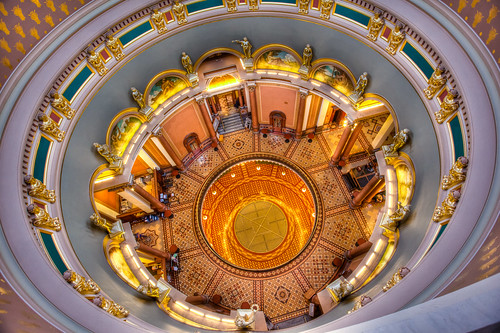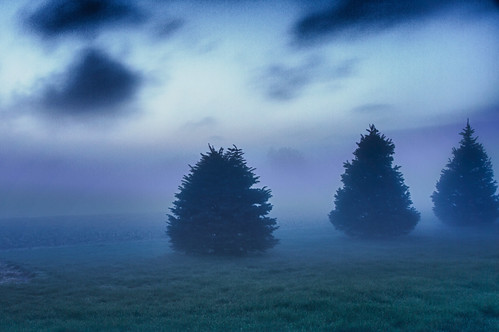339 - Water Texture
Image by Patrick Hoesly
This seamless texture was illustrated by Patrick Hoesly, a Kansas City based illustrator specializing in architectural illustrations and graphic design. This texture is released under the Creative Commons Attribution license. If you like this image, please mark it as a favorite and feel free to leave a comment. Thanks!
What is a Seamless Texture / Pattern?
A seamless texture is an special image, where one side of a image exactly matches the opposite side, so that the edges blend into each other when repeated. Seamless textures are used for desktop wallpaper, webpage backgrounds, video games, Photoshop fills and in 3D rendering programs.
How did you make it?
This texture was made using software specially designed to aid in seamless texture creation. Some of the programs I’ve use are Photoshop, Illustrator, Filter Forge, Genetica, Image Synth, Alien Skin, Topaz Labs, Imagelys, and a Wacom tablet.
Want a LARGER version of the texture?
Head over to my blog for information on downloading a bigger version of this texture: Texture LINK
Hollywood Stars - Seamless Texture
Image by Patrick Hoesly
This seamless texture was made by Patrick Hoesly, a Kansas City based illustrator specializing in architectural illustrations and graphic design. This texture is released under the Creative Commons Attribution license.
If you like this image, please leave a comment. Thanks!
What is a Seamless Texture / Pattern?
A seamless texture is an special image, where one side of a image exactly matches the opposite side, so that the edges blend into each other when repeated. Seamless textures are used for desktop wallpaper, webpage backgrounds, video games, Photoshop fills and in 3D rendering programs.
How did you make it?
This texture was made using software specially designed to aid in seamless texture creation. Some of the programs I use are Photoshop, Illustrator, Filter Forge, Genetica, Image Synth, Alien Skin, Topaz Labs, and even hand drawing.
About Patrick Hoesly:
I’m a graphic illustrator, specializing in architectural illustrations and graphic design. I work with Architects, Interior Designers, and Landscape Architects, to help them visualize and sell their designs ...Or in other words... Have you seen Toy Story, Avatar, or Tron? Yep, I do that stuff... only with buildings. Cool, Huh?
Check out my Blog at ZooBoingReview.blogspot.com
Also take a look at my website at www.ZooBoing.com
Iowa Capitol Dome Looking Down
Image by Out of Chicago
This was our first stop on the way up to the top of the dome at the Iowa Capitol. Can you figure out where I'm standing to take the image above in the image below? Read more about the tour, here. In this shot, you are seeing the bottom half of the dome and the upper level of the capitol building. You can see down to the main floor. In the center of the main floor is the glass circle with an X across it, in which you can see through to the basement.Shooting HDR Handheld
For today's image (top), I couldn't position my tripod to put my camera in position to get this composition. The only way I could do it was to reach my arms out over the railing and compose the image using live view on the camera LCD. I usually shoot my HDR brackets in manual exposure mode and take as many images as I need. Read the article that explains my process, here. For this type of shot, I put my camera in three shot bracket mode and let it rip. If you put the 5D Mark II in 2-second delay mode it will fire all three shots with one press of the shutter button. If I had a 5D Mark III it would do the same thing but would take up to 7 exposures automatically. I can't wait.
For shooting your HDR images handheld, you need to make sure that you have a fast enough shutter speed for your brightest (longest) exposure. Shooting at 17mm, I needed to get an exposure faster than 1/17th of a second. It is much easier to handhold when you are using a wide angle lens. Using the reciprocal rule, you would need 1/200th of a second for a 200mm lens. In this case, I needed to bump to ISO 3200 to get an exposure of 1/20th on the brightest exposure. I put the camera in 2-second delay, held out my hands, composed the shot, took a deep breath, hit the shutter button, and tried to stay as still as possible. I did this five or six times so that when I got the images back to my computer I could pick the sharpest images.
When you import the images into Photomatix, you will need to make sure that the images are aligned. I have heard that Photoshop does a better job than Photomatix lining the images up, but I have never had a problem letting Photomatix align the images.
Big Announcement! Topaz Labs and the Out of Chicago Photo Walk #3
I am proud to announce that Topaz Labs will be sponsoring the photo competition for our third photo walk this weekend. The grand prize winner will win a bundle of Topaz software. Two runners up will win their choice of one Topaz product. I hope to see you this Saturday! Read about the walk, here.
Easter Morning Fog - (Project 50/50 Week 20)
Image by w4nd3rl0st (InspiredinDesMoines)
Easter morning was cold and foggy. The fog mixed with sun made for some ominous clouds and purple hues looking out my backyard.
No comments:
Post a Comment